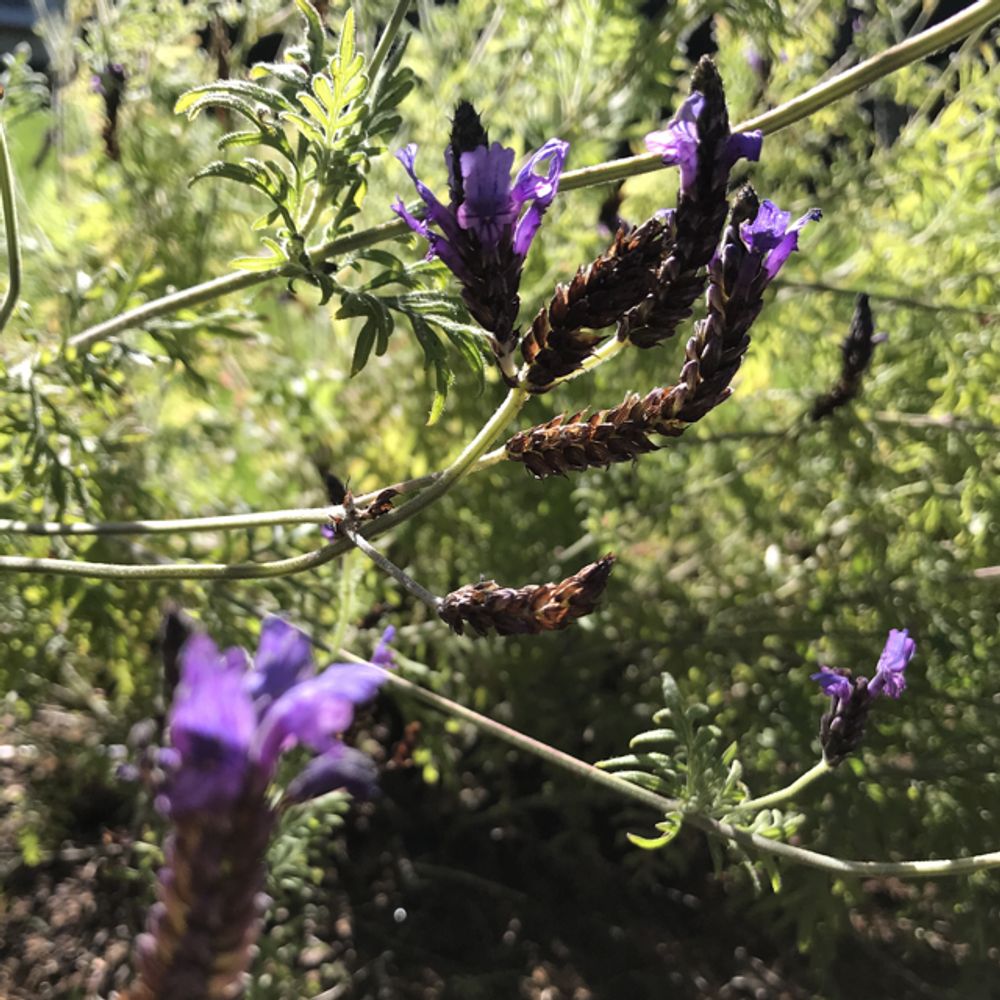Monkshood
(Aconitum)

Description
“Pet poisonous” – Toxic parts: roots, foliage and seeds Aconitum Napellus: The Monkshood Introduction: Aconitum napellus, commonly known as Monkshood, is a species of flowering plant in the buttercup family Ranunculaceae. It is native to Europe and Asia, but has been introduced to other regions and is widely cultivated as an ornamental plant. Description: Aconitum napellus is a herbaceous perennial plant that can grow up to 1-2 meters tall. The plant has dark green leaves that are divided into several lobes, and the stems are covered with a dense layer of hair. The flowers are hood-like, hence the common name Monkshood, and are blue, purple, or white in color. The flowers grow in spikes on the upper part of the plant, and bloom from July to September. Habitat: Aconitum napellus is commonly found in moist and shady habitats, such as woods, meadows, and river banks. It prefers soils that are rich in organic matter and well-drained. The plant is hardy and can grow in a range of climates, but it prefers cool and temperate regions. Cultivation: Aconitum napellus is relatively easy to cultivate and can be grown from seed or by division. The plant prefers moist, well-drained soil and partial shade. It is important to plant the Monkshood away from other plants and to space them out, as the plant can become invasive. Uses: Aconitum napellus has a long history of use in traditional medicine, particularly in Asia. The roots, leaves, and flowers of the plant contain toxic alkaloids, including aconitine, which can have a potent effect on the heart and nervous system. Despite its toxic properties, the plant has been used to treat a range of conditions, including rheumatism, arthritis, and neuralgia. In modern times, Aconitum napellus is used mainly for ornamental purposes and is a popular plant for flower gardens and rock gardens. The plant is also used in landscaping and as a cut flower. Toxicity: It is important to note that all parts of Aconitum napellus are highly toxic and should not be consumed or handled without proper protective gear. The toxic alkaloids present in the plant can cause serious health problems, including heart palpitations, convulsions, and death. Conclusion: Aconitum napellus, the Monkshood, is a beautiful and hardy plant that has been used for both medicinal and ornamental purposes for centuries. Despite its toxic properties, the plant remains a popular choice for gardeners and landscapers. As with any toxic plant, it is important to handle Aconitum napellus with caution and to keep it out of reach of children and pets. Aconite Aconitum, commonly known as aconite, monkshood, wolf's bane, leopard's bane, mousebane, women's bane, devil's helmet, queen of poisons, or blue rocket, is a genus of over 250 species of flowering plants belonging to the family Ranunculaceae. These herbaceous perennial plants are chiefly native to the mountainous parts of the Northern Hemisphere, growing in the moisture-retentive but well-draining soils of mountain meadows. Most species are extremely poisonous and must be dealt with very carefully. The name aconitum comes from the Greek ἀκόνιτον, which may derive from the Greek akon for dart or javelin, the tips of which were poisoned with the substance, or from akonae, because of the rocky ground on which the plant was thought to grow. The Greek name lycotonum, which translates literally to "wolf's bane", is thought to indicate the use of its juice to poison arrows or baits used to kill wolves. Several species of Aconitum have been used as arrow poisons. The Minaro in Ladakh use A. napellus on their arrows to hunt ibex, while the Ainu in Japan used a species of Aconitum to hunt bear. The Chinese also used Aconitum poisons both for hunting and for warfare. Aconitum poisons were used by the Aleuts of Alaska's Aleutian Islands for hunting whales. Usually, one man in a kayak armed with a poison-tipped lance would hunt the whale, paralyzing it with the poison and causing it to drown. A medium to dark semi-saturated blue-purple is the typical flower color for Aconitum species. Aconitum species tend to be variable enough in form and color in the wild to cause debate and confusion among experts when it comes to species classification boundaries. The overall color range of the genus is rather limited, although the palette has been extended a small amount with hybridization. In the wild, some Aconitum blue-purple shades can be very dark. In cultivation the shades do not reach this level of depth. Marked symptoms may appear almost immediately, usually not later than one hour, and "with large doses death is almost instantaneous". Death usually occurs within two to six hours in fatal poisoning (20 to 40 ml of tincture may prove fatal). The initial signs are gastrointestinal, including nausea, vomiting, and diarrhea. This is followed by a sensation of burning, tingling, and numbness in the mouth and face, and of burning in the abdomen. In severe poisonings, pronounced motor weakness occurs and cutaneous sensations of tingling and numbness spread to the limbs. Cardiovascular features include hypotension, sinus bradycardia, and ventricular arrhythmias. Other features may include sweating, dizziness, difficulty in breathing, headache, and confusion. The main causes of death are ventricular arrhythmias and asystole, or paralysis of the heart or respiratory center. The only post mortem signs are those of asphyxia.
Taxonomic tree:







